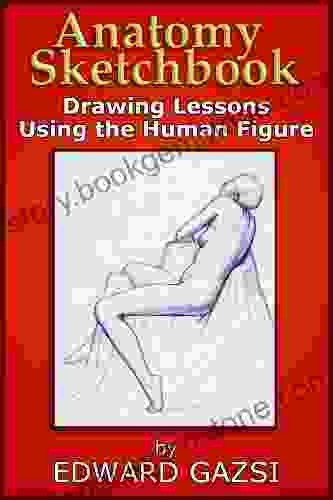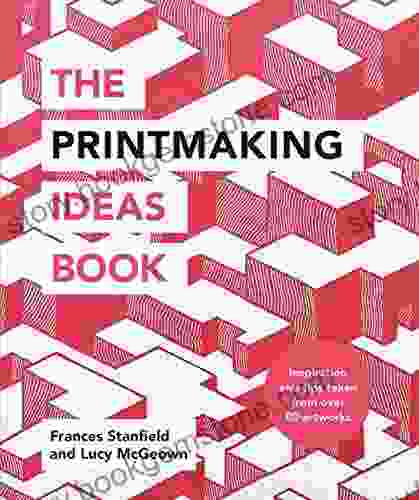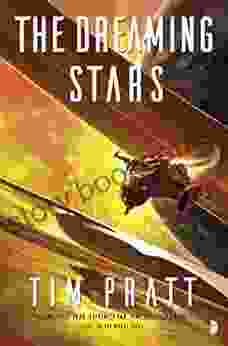Anatomy Sketchbook Drawing Lessons Using the Human Figure

Welcome to the realm of human anatomy sketchbook drawing! This comprehensive guide invites you, aspiring artists, to delve into the fascinating world of the human form. We embark on a journey through detailed sketchbook drawing lessons that will unlock your potential to capture the beauty and complexity of the human figure.
5 out of 5
| Language | : | English |
| Text-to-Speech | : | Enabled |
| Enhanced typesetting | : | Enabled |
| Print length | : | 184 pages |
| Lending | : | Enabled |
| File size | : | 16122 KB |
| Screen Reader | : | Supported |
Chapter 1: The Basics of Human Anatomy Drawing
Understanding Human Anatomy
Before we delve into sketching, it's crucial to grasp the fundamental principles of human anatomy. Understanding the skeletal structure, musculature, and proportions of the human body will provide a solid foundation for your drawings.
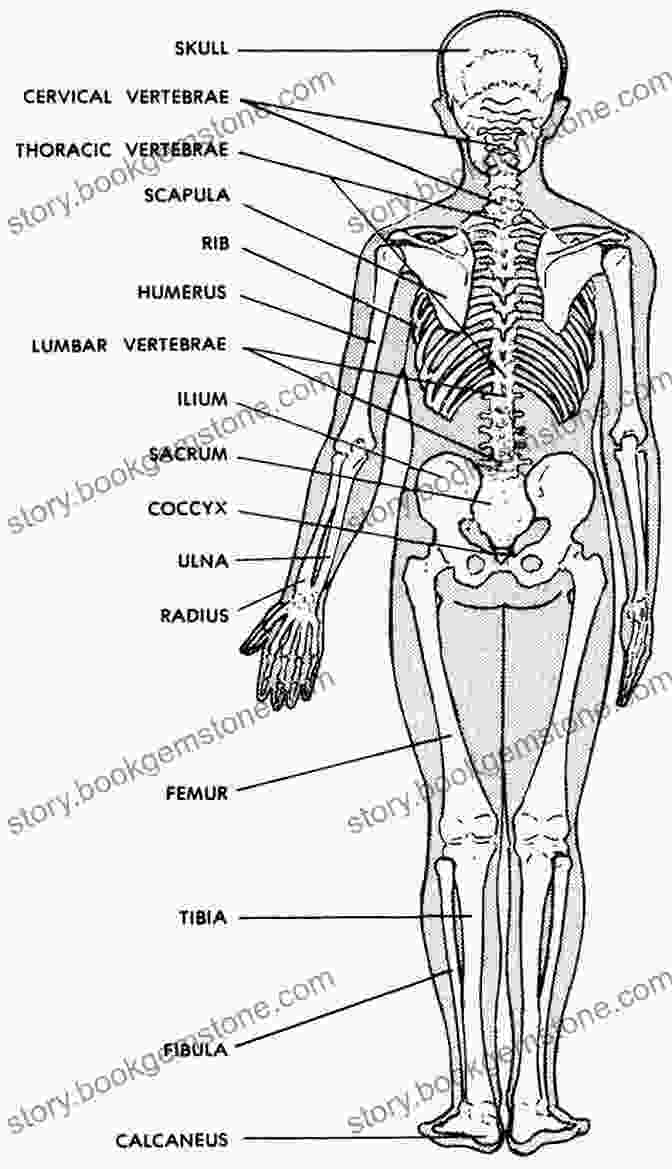
Proportions and Body Landmarks
Accurately capturing human proportions is paramount in anatomy drawing. Study the relationships between different body parts, such as the length of the torso relative to the legs or the size of the head in proportion to the body. Identify prominent body landmarks, like the clavicles, pelvis, and knee caps, as reference points for sketching.
Materials for Sketchbook Drawing
Embrace the versatility of sketchbook drawing by experimenting with a range of materials. Use pencils with varying hardness for different line qualities, explore the expressiveness of charcoal, and discover the delicate touch of graphite sticks. Choose sketchbooks with suitable paper quality that can withstand multiple erasures and reworks.
Chapter 2: Drawing the Head and Neck
The Skull: Framework for the Head
Unravel the enigmatic structure of the human skull. Comprehend its curved surfaces, ridges, and depressions that define the shape of the head. Study the positioning of the eyes, nose, and mouth in relation to the skull's contours.
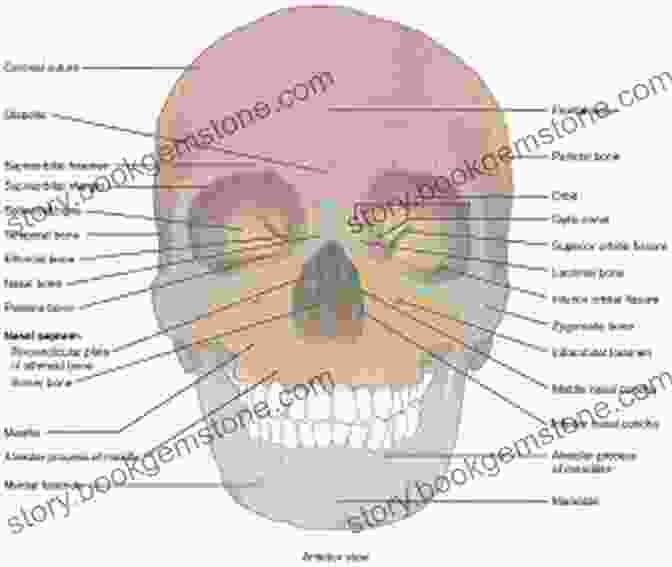
Facial Features and Expressions
Capture the essence of the human face by mastering the art of drawing facial features. Explore the delicate lines of the eyes, the subtle curves of the nose, and the expressive shape of the mouth. Study the interplay of muscles and emotions that create a range of facial expressions.
The Neck: Connecting Head and Body
The neck serves as a graceful transition between the head and body. Understand the neck's anatomy, including the vertebrae, muscles, and tendons. Capture the subtle contours and movements of the neck to convey a sense of dynamism in your drawings.
Chapter 3: Drawing the Torso and Limbs
The Torso: Central Core of the Body
The torso encompasses the rib cage, spine, and abdomen. Study the structure and proportions of the torso, paying attention to the rib cage's curvature, the spinal column's alignment, and the muscularity of the abdomen.
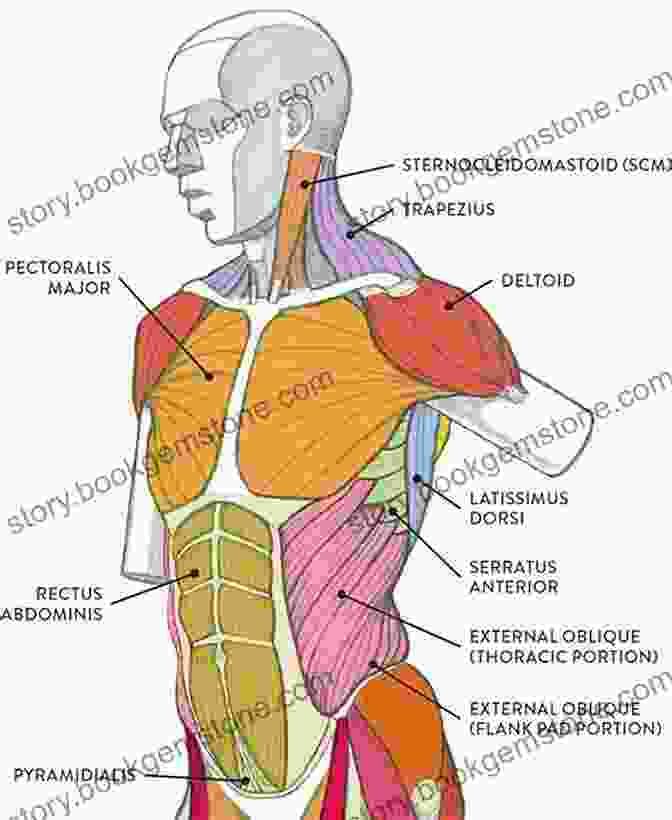
The Limbs: Movement and Flexibility
Capture the dynamic range of human movement by understanding the anatomy of the limbs. Study the skeletal structure, musculature, and joints of the arms and legs. Observe the articulation and flexibility of the limbs to convey a sense of motion and fluidity in your drawings.
Hands and Feet: Expressive Endings
Hands and feet are intricate structures that allow for a wide range of expressions. Delve into the anatomy of the hand, including the bones, muscles, and tendons. Understand the proportions and articulations of the fingers to capture their delicate movements. Similarly, explore the anatomy of the foot, paying attention to the arch, heel, and toes to convey weight distribution and movement.
Chapter 4: Capturing Movement and Gesture
Dynamic Posing and Gestures
Bring your anatomy drawings to life by capturing dynamic poses and gestures. Study the principles of movement and balance to create figures that convey a sense of action and emotion. Experiment with different angles, perspectives, and body language to express a range of narratives through your drawings.
Exaggeration and Abstraction
In anatomy drawing, exaggeration and abstraction can be powerful tools. Learn how to subtly exaggerate proportions or simplify anatomical details to enhance the impact of your drawings. Explore how abstraction can convey movement, emotion, and personal style.
Composition and Background
Consider the composition of your drawings to guide the viewer's gaze and create a cohesive image. Utilize background elements to establish context, mood, and atmosphere. Experiment with negative space and cropping to create dynamic and visually appealing compositions.
Chapter 5: Advanced Techniques and Artistic Expression
Advanced Shading and Lighting
Master the art of shading and lighting to create depth, volume, and texture in your drawings. Study the effects of light on different surfaces and experiment with various shading techniques, such as cross-hatching, stippling, and blending.
Artistic Interpretation and Style
Anatomy drawing is not merely about reproducing the physical form but also about expressing your artistic vision. Explore different artistic styles, from realism to abstraction, and experiment with personal interpretations of the human figure.
Inspiration and Reference Materials
Immerse yourself in the works of great anatomical artists and study the masters to draw inspiration from their techniques and approaches. Utilize reference materials, such as anatomical charts, photographs, and live models, to enhance your understanding of the human form.
As you embark on this artistic journey, remember that practicing regularly and experimenting with different techniques is key to mastering anatomy sketchbook drawing. Embrace the challenges, seek feedback, and continue to refine your skills. With dedication and passion, you will unlock the power to capture the beauty and complexity of the human figure, creating captivating and expressive works of art.
5 out of 5
| Language | : | English |
| Text-to-Speech | : | Enabled |
| Enhanced typesetting | : | Enabled |
| Print length | : | 184 pages |
| Lending | : | Enabled |
| File size | : | 16122 KB |
| Screen Reader | : | Supported |
Do you want to contribute by writing guest posts on this blog?
Please contact us and send us a resume of previous articles that you have written.
 Best Book
Best Book Page Flip
Page Flip Bookshelf
Bookshelf Literary loom
Literary loom Chapter
Chapter Bookish
Bookish PageTurner
PageTurner Bibliophile
Bibliophile Story
Story Inkwell
Inkwell Bookworm
Bookworm Labyrinth
Labyrinth Plot Twist
Plot Twist Prose
Prose Paperback
Paperback Storyteller
Storyteller Sanctuary
Sanctuary Fiction
Fiction Reading
Reading Chronicle
Chronicle Read
Read Johann Wolfgang Von Goethe
Johann Wolfgang Von Goethe Wesley Granberg Michaelson
Wesley Granberg Michaelson Eugene Robinson
Eugene Robinson Lynn F Forney
Lynn F Forney Linda Kemp
Linda Kemp Julian Aguon
Julian Aguon T R Napper
T R Napper Lorraine Hansberry
Lorraine Hansberry Tracey Eaton
Tracey Eaton Sydney Ladensohn Stern
Sydney Ladensohn Stern Emma Sky
Emma Sky Jade Spark
Jade Spark Sharlene Rendle
Sharlene Rendle Wallace Terry
Wallace Terry Funmi Fetto
Funmi Fetto Michael J Decker
Michael J Decker Leslie J Sherrod
Leslie J Sherrod Leslie Frontz
Leslie Frontz Vanessa R Sasson
Vanessa R Sasson John Graves
John Graves Mark Tufo
Mark Tufo Mahealani Uchiyama
Mahealani Uchiyama Flora Miller Biddle
Flora Miller Biddle Esther Jungreis
Esther Jungreis Lauren Collins
Lauren Collins Katherine Baber
Katherine Baber Jennet Conant
Jennet Conant Terry Goodkind
Terry Goodkind Jeremy Asher Dauber
Jeremy Asher Dauber Mark Horrell
Mark Horrell Frederick Douglass
Frederick Douglass Mark Simon
Mark Simon H G Wells
H G Wells Traci Foust
Traci Foust Veronica Winters
Veronica Winters James Craig
James Craig Wendy Bellion
Wendy Bellion Leisa Rundquist
Leisa Rundquist Jennifer Cruz
Jennifer Cruz Fred S Kleiner
Fred S Kleiner John Tateishi
John Tateishi Mike Kraus
Mike Kraus Ilene Beckerman
Ilene Beckerman Operation Alpha
Operation Alpha Ian Warrell
Ian Warrell Evelio Grillo
Evelio Grillo Jasmine Mans
Jasmine Mans John Rechy
John Rechy Jamie Mcfarlane
Jamie Mcfarlane Bill Fawcett
Bill Fawcett Jayne Wark
Jayne Wark Jacob Burckhardt
Jacob Burckhardt Scott Rigsby
Scott Rigsby Chanrithy Him
Chanrithy Him Martyn Clifford
Martyn Clifford John W Morehead
John W Morehead Eyal Davidson
Eyal Davidson Maria Augusta Trapp
Maria Augusta Trapp Jimmy Snuka
Jimmy Snuka Firoozeh Dumas
Firoozeh Dumas Karl Iglesias
Karl Iglesias Yelena Lembersky
Yelena Lembersky Ian Usher
Ian Usher Francesco Careri
Francesco Careri Susan Britt Gallagher
Susan Britt Gallagher Thad Komorowski
Thad Komorowski Nicole R Fleetwood
Nicole R Fleetwood Sally Mott Freeman
Sally Mott Freeman Eva Priest
Eva Priest Kent Blansett
Kent Blansett David Codamo
David Codamo Fergal Keane
Fergal Keane Holly Winter Huppert
Holly Winter Huppert Maureen Callahan
Maureen Callahan Frances Dinkelspiel
Frances Dinkelspiel Ros Per
Ros Per Tom Sancton
Tom Sancton Birgit O Connor
Birgit O Connor Russell Means
Russell Means G K Chesterton
G K Chesterton F Scott Fitzgerald
F Scott Fitzgerald Steven Heller
Steven Heller John Scalzi
John Scalzi Julie Garwood
Julie Garwood Paul Allain
Paul Allain Steven Derosa
Steven Derosa Jan Moran
Jan Moran Matthew W Sanford
Matthew W Sanford Mary Vaughan
Mary Vaughan Richard Phillips
Richard Phillips George Allen Durkee
George Allen Durkee Laura Reiter
Laura Reiter Enrique Zaldivar
Enrique Zaldivar Maureen Furniss
Maureen Furniss Samantha Ford
Samantha Ford Paula Reed
Paula Reed Revised Edition Kindle Edition
Revised Edition Kindle Edition Eric Shanes
Eric Shanes Taylor Branch
Taylor Branch Jessica Gadziala
Jessica Gadziala Franny Moyle
Franny Moyle Ann Petry
Ann Petry Tim Leong
Tim Leong Jami Attenberg
Jami Attenberg Sir John Chardin
Sir John Chardin Jody Eddy
Jody Eddy Ben Macintyre
Ben Macintyre Lynsay Sands
Lynsay Sands Ray Balkwill
Ray Balkwill Lola Dodge
Lola Dodge Scott Waddle
Scott Waddle Philip Donlay
Philip Donlay Gris Grimly
Gris Grimly Matthew Baxter
Matthew Baxter Nicole Seymour
Nicole Seymour Will Gompertz
Will Gompertz Michael Moran
Michael Moran Nice Leng Ete
Nice Leng Ete John Mcphee
John Mcphee Eshaan Sombhatta
Eshaan Sombhatta Farrah Rochon
Farrah Rochon Rudolf Steiner
Rudolf Steiner Marc Uwe Kling
Marc Uwe Kling J Donald Walters
J Donald Walters Keisha Quallo
Keisha Quallo Kevin Collamore Braun
Kevin Collamore Braun Joe Hammond
Joe Hammond Valerie Van Ballaer
Valerie Van Ballaer G Costa
G Costa Francene Hart
Francene Hart Gerald Hausman
Gerald Hausman Erin Meads
Erin Meads Mei Yu
Mei Yu Rachel Trethewey
Rachel Trethewey Ignatia Broker
Ignatia Broker Isaac Asimov
Isaac Asimov Jordan Matter
Jordan Matter Henri J M Nouwen
Henri J M Nouwen Eric Jerome Dickey
Eric Jerome Dickey Will Lutwick
Will Lutwick Rose Marie Beebe
Rose Marie Beebe Hugh Howey
Hugh Howey Evan Winter
Evan Winter Jo Charnock
Jo Charnock Sharon C Cooper
Sharon C Cooper Kit Sun Cheah
Kit Sun Cheah Enrico Massetti
Enrico Massetti Lee Hammond
Lee Hammond Miles Orvell
Miles Orvell Jimmy Santiago Baca
Jimmy Santiago Baca John Floyd
John Floyd Valerie Steele
Valerie Steele Curt Warner
Curt Warner Marcus Sloss
Marcus Sloss Stacey Abrams
Stacey Abrams Ross Feld
Ross Feld Judith Yates
Judith Yates Douglas Phillips
Douglas Phillips Digital Papyrus
Digital Papyrus Michael Mcgarrity
Michael Mcgarrity Gene Roddenberry
Gene Roddenberry Melissa Hart
Melissa Hart Eric Thomson
Eric Thomson Linda Birch
Linda Birch Maya Angelou
Maya Angelou Chelsea Handler
Chelsea Handler Jeanne Howard
Jeanne Howard Fodor S Travel Guides
Fodor S Travel Guides J Chary
J Chary Susan Mahalick
Susan Mahalick Tu Ilape Vimahi
Tu Ilape Vimahi Leticia Sansores
Leticia Sansores Georgia Hunter
Georgia Hunter Keah Brown
Keah Brown Jennifer Higgie
Jennifer Higgie Jerry Minchey
Jerry Minchey Laureen Jordan
Laureen Jordan Jeff Pearlman
Jeff Pearlman Fred M Grandinetti
Fred M Grandinetti Sir Richard Francis Burton
Sir Richard Francis Burton Lily King
Lily King Peter Schjeldahl
Peter Schjeldahl Brian Lawrenson
Brian Lawrenson Raiford Guins
Raiford Guins Brittney Brooke
Brittney Brooke Leilehua Yuen
Leilehua Yuen Jennifer Smith Turner
Jennifer Smith Turner Os Cresson
Os Cresson Robert C Wood
Robert C Wood Trevor Waugh
Trevor Waugh S Qiouyi Lu
S Qiouyi Lu S M Anderson
S M Anderson Lynnea Lee
Lynnea Lee Francisco Goya
Francisco Goya J L Witterick
J L Witterick Matthew Farrer
Matthew Farrer Sara King
Sara King John Cameron Smith
John Cameron Smith Jacques Maritain
Jacques Maritain Ocean Vuong
Ocean Vuong Idtravelling
Idtravelling Tom Blakemore
Tom Blakemore Filippo Ulivieri
Filippo Ulivieri Johnnie Gentle
Johnnie Gentle Faith Evans Sills
Faith Evans Sills Mark Dawson
Mark Dawson Robert Bailey
Robert Bailey Kara Tatelbaum
Kara Tatelbaum Lucy Vine
Lucy Vine Quan Millz
Quan Millz Ted Loukes
Ted Loukes Seanan Mcguire
Seanan Mcguire Laura Sherman
Laura Sherman Endiya Carter
Endiya Carter Q David Bowers
Q David Bowers Frances Kiernan
Frances Kiernan Tish Jett
Tish Jett James Caskey
James Caskey G S Jennsen
G S Jennsen Martin Ony
Martin Ony Jane Dempster Smith
Jane Dempster Smith Randy Welborn
Randy Welborn Stephanie Bower
Stephanie Bower Zaina Brown
Zaina Brown Geoffrey Ball
Geoffrey Ball Eric Rouleau
Eric Rouleau Jasmine Taylor
Jasmine Taylor Richard Rodriguez
Richard Rodriguez John Marshall
John Marshall Matt Forster
Matt Forster Shiva Rahbaran
Shiva Rahbaran Timm Mains
Timm Mains Jim Krause
Jim Krause Fernand Braudel
Fernand Braudel Lisa Gardner
Lisa Gardner Oscar Lovell Triggs
Oscar Lovell Triggs Mina Carter
Mina Carter Eoin O Callaghan
Eoin O Callaghan Belinda Austin
Belinda Austin Christian Kallias
Christian Kallias John Walker
John Walker Vicki Andree
Vicki Andree Melanie Cambridge
Melanie Cambridge Clark Norton
Clark Norton Frances Stonor Saunders
Frances Stonor Saunders Michaelbrent Collings
Michaelbrent Collings E J Fleming
E J Fleming Mary Mccarthy
Mary Mccarthy Farah Jasmine Griffin
Farah Jasmine Griffin Jerry Stahl
Jerry Stahl Seyyed Hossein Nasr
Seyyed Hossein Nasr Frederick Harris
Frederick Harris P Planat
P Planat John Cage
John Cage Mark Wayne Mcginnis
Mark Wayne Mcginnis David B Levy
David B Levy Johnson Cheu
Johnson Cheu R A Nargi
R A Nargi Jennifer 8 Lee
Jennifer 8 Lee Frederick Forsyth
Frederick Forsyth Kunal Verma
Kunal Verma Kenyatta Kelechi
Kenyatta Kelechi Michael N Marcus
Michael N Marcus Lee Feigon
Lee Feigon Ronnie Lipton
Ronnie Lipton Scott Shupe
Scott Shupe Barbara Lewis
Barbara Lewis Nathaniel Schiffman
Nathaniel Schiffman Graeme I
Graeme I Jerome Preisler
Jerome Preisler Gladys Malvern
Gladys Malvern Orin Starn
Orin Starn Peter Ford
Peter Ford William J Conaway
William J Conaway Sandy Steen Bartholomew
Sandy Steen Bartholomew Joseph D Addetta
Joseph D Addetta Fiona Peart
Fiona Peart Explore Towin
Explore Towin John P Murphy
John P Murphy Piers Anthony
Piers Anthony Susan Nathan
Susan Nathan Lawrence Chui
Lawrence Chui Mayte Garcia
Mayte Garcia Harry Ritter
Harry Ritter Paul D Marks
Paul D Marks Kate Spade New York
Kate Spade New York Frank Wall
Frank Wall Esraa Ghazo
Esraa Ghazo Shari Blaukopf
Shari Blaukopf Stephen Laskevitch
Stephen Laskevitch Edward Brody
Edward Brody Stephanie Mehta
Stephanie Mehta Elaine Lui
Elaine Lui Mitch Albom
Mitch Albom S A Chakraborty
S A Chakraborty Richard Walter
Richard Walter Eric Karjaluoto
Eric Karjaluoto Regina Louise
Regina Louise Harry Thurston
Harry Thurston Howard Thurman
Howard Thurman Luther Standing Bear
Luther Standing Bear Brandon Q Morris
Brandon Q Morris Peter Heller
Peter Heller Ian Mcewan
Ian Mcewan Franco Mormando
Franco Mormando Gabe Fajuri
Gabe Fajuri Boze Hadleigh
Boze Hadleigh Jess Grippo
Jess Grippo Stephanie Pui Mun Law
Stephanie Pui Mun Law Jerry Remy
Jerry Remy Hashim Akib
Hashim Akib Enrique Herrera
Enrique Herrera Richard Fife
Richard Fife Franz Sales Meyer
Franz Sales Meyer Marion Amberg
Marion Amberg Yvon Chatelin
Yvon Chatelin Misty M Beller
Misty M Beller Glenn Dakin
Glenn Dakin Lisa Eldridge
Lisa Eldridge Dawn C Crouch
Dawn C Crouch Meiqin Wang
Meiqin Wang Jeff Burgess
Jeff Burgess Francisco Martin Rayo
Francisco Martin Rayo Jason Anspach
Jason Anspach Tipu Khan
Tipu Khan Gavin Strange
Gavin Strange Rebekah Taussig
Rebekah Taussig Ruth E Iskin
Ruth E Iskin Shoba Narayan
Shoba Narayan Robert Hardman
Robert Hardman Ursula Bacon
Ursula Bacon Philip Caputo
Philip Caputo Vaclav Havel
Vaclav Havel Chanda Prescod Weinstein
Chanda Prescod Weinstein Sophie Stern
Sophie Stern Esmeralda Santiago
Esmeralda Santiago Lindsey Tramuta
Lindsey Tramuta Volker Poelzl
Volker Poelzl Eric Foner
Eric Foner L X Beckett
L X Beckett Mitchell Grey
Mitchell Grey Erika B
Erika B Regan Cerato
Regan Cerato Harriet Mcbryde Johnson
Harriet Mcbryde Johnson Joe Kane
Joe Kane Sallust
Sallust Leana Wen
Leana Wen M R Green
M R Green Fania E Davis
Fania E Davis Wilson Harvey
Wilson Harvey Lee Hadan
Lee Hadan J L Torres
J L Torres Ta Nehisi Coates
Ta Nehisi Coates Robert Westbrook
Robert Westbrook Max Anderson
Max Anderson Patty Krawec
Patty Krawec Ken Hultgren
Ken Hultgren S K Dunstall
S K Dunstall Logan Jacobs
Logan Jacobs Uri Dan
Uri Dan Oliver Kent
Oliver Kent Susan Sontag
Susan Sontag Rainer Maria Rilke
Rainer Maria Rilke Jeffrey Archer
Jeffrey Archer Mark Hillary
Mark Hillary Drew Karpyshyn
Drew Karpyshyn Lewis Grassic Gibbon
Lewis Grassic Gibbon Mary Monroe
Mary Monroe Victoria Finlay
Victoria Finlay Peter Max
Peter Max Henry Kuttner
Henry Kuttner Ernestine Hayes
Ernestine Hayes Michael Eric Dyson
Michael Eric Dyson Henry Adams
Henry Adams Mia Black
Mia Black Nicholas Mirzoeff
Nicholas Mirzoeff Karen Haller
Karen Haller Guy Austin
Guy Austin Lynda Lopez
Lynda Lopez Selwyn Leamy
Selwyn Leamy Joshua Safran
Joshua Safran Karl Fulves
Karl Fulves S Yvonne
S Yvonne Frank Babb
Frank Babb Stephen Jones
Stephen Jones Jay Scarfone
Jay Scarfone Eric Franklin
Eric Franklin Groucho Marx
Groucho Marx Katrien Van Der Schueren
Katrien Van Der Schueren Ree Drummond
Ree Drummond Jenni Dobson
Jenni Dobson Nathan Hystad
Nathan Hystad Petra Kuppers
Petra Kuppers Fiona Davis
Fiona Davis Justin Sloan
Justin Sloan John Baxter
John Baxter Jo Spain
Jo Spain Shirley Blancke
Shirley Blancke Franklin Horton
Franklin Horton Sandy Allnock
Sandy Allnock Henry W Simon
Henry W Simon Ernst Pawel
Ernst Pawel R Coxton
R Coxton Erin H Turner
Erin H Turner John Williams
John Williams Maury Aaseng
Maury Aaseng Ruby Boukabou
Ruby Boukabou Sunny Hostin
Sunny Hostin Stephen M Silverman
Stephen M Silverman Torey L Hayden
Torey L Hayden Frank Argote Freyre
Frank Argote Freyre Jayne Rylon
Jayne Rylon Hugh Pendexter
Hugh Pendexter Florian Illies
Florian Illies G Bruce Boyer
G Bruce Boyer Luke Waterson
Luke Waterson Saidiya V Hartman
Saidiya V Hartman Eva Mozes Kor
Eva Mozes Kor John Alexander
John Alexander Susan Mallery
Susan Mallery Josie Lewis
Josie Lewis Marie Benedict
Marie Benedict Jewelle Gomez
Jewelle Gomez Rob Smyth
Rob Smyth Hayward Cirker
Hayward Cirker Mike Jack Stoumbos
Mike Jack Stoumbos Eric Metaxas
Eric Metaxas Mari Lyn Henry
Mari Lyn Henry Olga Baranova
Olga Baranova Diane Greenberg
Diane Greenberg Tom Nichols
Tom Nichols Christopher Reutinger
Christopher Reutinger Erin Robinson Hoffman
Erin Robinson Hoffman James David Victor
James David Victor Kallie Young
Kallie Young Francine Prose
Francine Prose Manny Khoshbin
Manny Khoshbin John Hundley
John Hundley Teruko Sakurai
Teruko Sakurai Kathleen E Woodiwiss
Kathleen E Woodiwiss Michael F Kastre
Michael F Kastre Brenda Jackson
Brenda Jackson Kid Congo Powers
Kid Congo Powers Ernesto Galarza
Ernesto Galarza Nicholas Crouch
Nicholas Crouch Mark Rice
Mark Rice Glynn Stewart
Glynn Stewart F Knight
F Knight Zohara Hirji
Zohara Hirji Frances Stanfield
Frances Stanfield Neil Clarke
Neil Clarke Anna Todd
Anna Todd Frederik L Schodt
Frederik L Schodt Jonathan Kellerman
Jonathan Kellerman Renee D Aoust
Renee D Aoust Jeanie Tsui
Jeanie Tsui Jerry Yarnell
Jerry Yarnell Neal Gabler
Neal Gabler Zenna Henderson
Zenna Henderson Frederik Pohl
Frederik Pohl Sofie Roach
Sofie Roach Eva Ibbotson
Eva Ibbotson Nick Kyme
Nick Kyme Ellen Lupton
Ellen Lupton Nahal Tajadod
Nahal Tajadod Ted Andrews
Ted Andrews Lisa Napoli
Lisa Napoli Tim Pratt
Tim Pratt Gillian Marchenko
Gillian Marchenko Keith Svagerko
Keith Svagerko Sandro Jung
Sandro Jung Jo B Paoletti
Jo B Paoletti Stephen Bucaro
Stephen Bucaro Vera Raye
Vera Raye Georgina Pazcoguin
Georgina Pazcoguin Zane
Zane Nancy Sharon Collins
Nancy Sharon Collins Jessie Redmon Fauset
Jessie Redmon Fauset Kellee L Greene
Kellee L Greene Oliver Sin
Oliver Sin Meniere Man
Meniere Man Rachel Eskandari
Rachel Eskandari Mark Harris
Mark Harris Walter Foster Creative Team
Walter Foster Creative Team Tiece
Tiece Jennifer Visocky O Grady
Jennifer Visocky O Grady Jaleen Grove
Jaleen Grove Sibylla Nash
Sibylla Nash Matthew Palmer
Matthew Palmer Tom Piazza
Tom Piazza Leigh Forbes
Leigh Forbes Carol Jenkins
Carol Jenkins Quang Van Nguyen
Quang Van Nguyen Steven M Barrett
Steven M Barrett Alejandro Dujovne
Alejandro Dujovne Piri Thomas
Piri Thomas Jericho Brown
Jericho Brown Weina Dai Randel
Weina Dai Randel Reginald F Lewis
Reginald F Lewis Loren Moss
Loren Moss Stanley Meisler
Stanley Meisler Joseph Delaney
Joseph Delaney Weike Wang
Weike Wang Tim O Brien
Tim O Brien Sheryl Sandberg
Sheryl Sandberg Ferrett Steinmetz
Ferrett Steinmetz Jacob Broschart
Jacob Broschart Gary W Bowersox
Gary W Bowersox Ramin Zahed
Ramin Zahed Farah Bidin
Farah Bidin Laurie Mcandish King
Laurie Mcandish King Chris Enss
Chris Enss Maria Tallchief
Maria Tallchief Yahrah St John
Yahrah St John Michael Siebenbrodt
Michael Siebenbrodt Michael C Sturman
Michael C Sturman Putsata Reang
Putsata Reang Sandra Cross
Sandra Cross Karen Brooks Hopkins
Karen Brooks Hopkins Richard Killeen
Richard Killeen Patricia Raybon
Patricia Raybon Eric Walters
Eric Walters Suze Solari
Suze Solari Julia Emma
Julia Emma Carolyn Brown
Carolyn Brown Wes D Gehring
Wes D Gehring Dirk Walvoord
Dirk Walvoord Martin Gitlin
Martin Gitlin Lina Bengtsdotter
Lina Bengtsdotter Sapphire
Sapphire F B Heald
F B Heald Eve Vaughn
Eve Vaughn Emma Gift
Emma Gift James Woodford
James Woodford Jay Parini
Jay Parini Peter Barnes
Peter Barnes Michelle Holder
Michelle Holder Eungjun Min
Eungjun Min Deborah Solomon
Deborah Solomon Kevina Hopkins
Kevina Hopkins Tom Hoffmann
Tom Hoffmann Cheryl Probst
Cheryl Probst L Ron Hubbard
L Ron Hubbard David Anicetti
David Anicetti Pui Che
Pui Che Stefan C Reif
Stefan C Reif Debra Gwartney
Debra Gwartney Belle Calhoune
Belle Calhoune Roma Ligocka
Roma Ligocka Jerry Boyd
Jerry Boyd Dennis Vanderkerken
Dennis Vanderkerken Kelly Hodge
Kelly Hodge Glennon Doyle
Glennon Doyle Frank Mclynn
Frank Mclynn Sy Montgomery
Sy Montgomery Ryan O Connell
Ryan O Connell Patricia Briggs
Patricia Briggs Fredric Brown
Fredric Brown Frank Settle
Frank Settle Sheila Hocken
Sheila Hocken Niobia Bryant
Niobia Bryant Thota Ramesh
Thota Ramesh T F Rhoden
T F Rhoden Kennedy Odede
Kennedy Odede Jeff Yang
Jeff Yang Sandy Alvarez
Sandy Alvarez Kristin Van Leuven
Kristin Van Leuven Klaus Carl
Klaus Carl Simran Bansal
Simran Bansal Bruce Sterling
Bruce Sterling Justin Merm
Justin Merm Frank Herbert
Frank Herbert J M Calverley
J M Calverley Frank Vlastnik
Frank Vlastnik Sharon Swift
Sharon Swift John Foster
John Foster Eric Wiberg
Eric Wiberg Richard Dunlop
Richard Dunlop William F Stark
William F Stark Georgina Shorter
Georgina Shorter Kelly Wiese
Kelly Wiese Sandra Rendgen
Sandra Rendgen Erin French
Erin French Frank Gado
Frank Gado Jessica Mack
Jessica Mack Funa
Funa Matthew Morgante
Matthew Morgante Lora S Irish
Lora S Irish Eric Larson
Eric Larson Mark Padilla
Mark Padilla Evelyn Gallardo
Evelyn Gallardo Rita Naomi Moran
Rita Naomi Moran Paul Bowles
Paul Bowles Karen Telling
Karen Telling Frederick Starr
Frederick Starr Eriko Ogihara Schuck
Eriko Ogihara Schuck Steven Brust
Steven Brust Simon Winchester
Simon Winchester Mark Crilley
Mark Crilley Gulbahar Haitiwaji
Gulbahar Haitiwaji Florence Scovel Shinn
Florence Scovel Shinn Jo Tatchell
Jo Tatchell Mike Bockoven
Mike Bockoven Richard Sale
Richard Sale Margaret Aycock
Margaret Aycock Ernie Jr Johnson
Ernie Jr Johnson Rachael Chastain
Rachael Chastain
Light bulbAdvertise smarter! Our strategic ad space ensures maximum exposure. Reserve your spot today!

 Fletcher MitchellMy Art Notebook by Randy Welborn: Embark on a Creative Odyssey to Unleash...
Fletcher MitchellMy Art Notebook by Randy Welborn: Embark on a Creative Odyssey to Unleash... Walt WhitmanFollow ·4.3k
Walt WhitmanFollow ·4.3k Gage HayesFollow ·4.4k
Gage HayesFollow ·4.4k Gilbert CoxFollow ·18k
Gilbert CoxFollow ·18k Larry ReedFollow ·10k
Larry ReedFollow ·10k Drew BellFollow ·2.8k
Drew BellFollow ·2.8k Reginald CoxFollow ·5.3k
Reginald CoxFollow ·5.3k F. Scott FitzgeraldFollow ·11.8k
F. Scott FitzgeraldFollow ·11.8k Quentin PowellFollow ·3.3k
Quentin PowellFollow ·3.3k
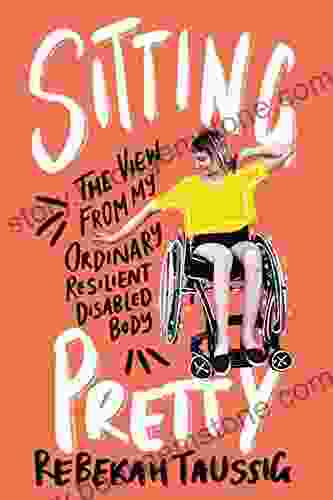
 Anton Foster
Anton FosterThe View From My Ordinary Resilient Disabled Body
In a world where...

 Chandler Ward
Chandler WardThe Rise of the Jain Two: A Monument to Naval Supremacy
In the vast...

 Jonathan Hayes
Jonathan HayesThe Right Thing by Scott Waddle: A Path Through the...
Scott Waddle's "The...
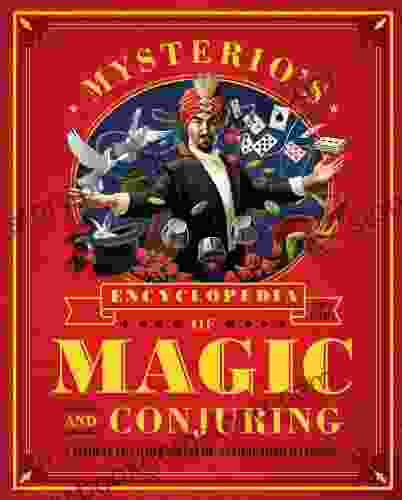
 Hamilton Bell
Hamilton BellMysterio Encyclopedia of Magic and Conjuring: A...
Mysterio Encyclopedia of...

 Zachary Cox
Zachary CoxAge of Expansion: Kurtherian Gambit, Valerie Elites - A...
: A Realm of Endless...

 Lawrence Bell
Lawrence BellA Short History of Falling: From Newton to Freefall
Falling is a...
5 out of 5
| Language | : | English |
| Text-to-Speech | : | Enabled |
| Enhanced typesetting | : | Enabled |
| Print length | : | 184 pages |
| Lending | : | Enabled |
| File size | : | 16122 KB |
| Screen Reader | : | Supported |


